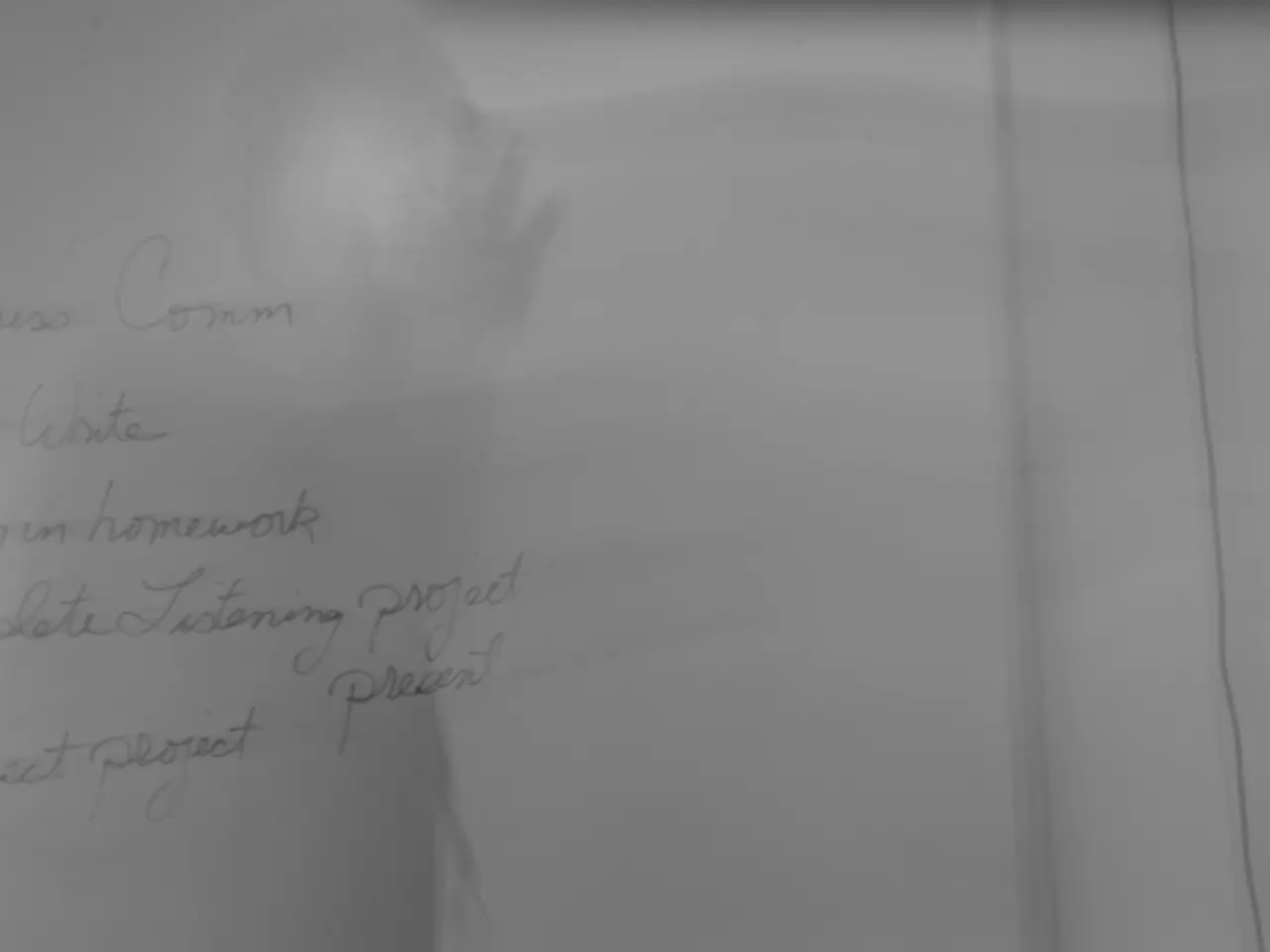Lunar Mystery Unveiled: The Always Visible Side of the Moon and the Enigmatic Far Side Revealed
======================================================
In the vast expanse of space, the Moon, our closest celestial neighbour, holds a captivating mystery – the far side. While the near side, with its familiar patterns of lunar maria, has long been a subject of fascination, the far side remains shrouded in intrigue.
The two-week-long frigid lunar night on the far side makes it an ideal location for keeping sensitive detectors super cold, a potential boon for future scientific missions. This side of the Moon, often referred to as the 'dark side,' is not as dark as one might think. It goes through the same cycle of illumination as the near side, but the term is a misnomer that has stuck.
The far side of the Moon is dominated by rugged, heavily cratered highlands, with very few lunar maria, covering only a few percent of the surface. This stark contrast with the near side, which features extensive lunar maria, is primarily due to differences in crustal thickness and volcanic history.
The crust of the far side of the Moon may be up to twice as thick as that of the near side, possibly due to the slow accretion of a companion satellite after an impact. This thicker crust inhibited magma from reaching the surface, resulting in fewer lava plains. However, recent sample returns from China’s Chang’e 6 mission reveal that the far side did experience volcanic activity, but at different times and less extensively than the near side.
The key differences between the near and far sides of the Moon are summarised in the table below:
| Feature | Near Side | Far Side | |-------------------|-----------------------------|-------------------------------| | Lunar maria | Extensive, smooth lava plains | Very few, mostly rugged terrain | | Crust thickness | Thinner (~30–40 km) | Thicker (about 15 km thicker than near side) | | Terrain type | Flat maria areas | Rugged highlands with heavy cratering | | Volcanism timing | Multiple eruptions flooding basins | Occurred but less extensive and different timing[5] |
The far side of the Moon, with its potential for larger and more sensitive radio telescopes due to its lower surface gravity and shielding from electromagnetic interference, presents an attractive location for future astronomical research. Radio astronomers are currently facing interference issues due to the global proliferation of electronic devices, making it hard to study signals from billions of lightyears away. A radio telescope on the Moon's far side could be shielded from such interference by nearly 3,500km of rock, offering a tantalising opportunity for groundbreaking discoveries.
The Moon's violent genesis occurred as a product of a collision between the proto-Earth and a Mars-sized body approximately 4.5 billion years ago. This cataclysmic event gave rise to the Moon, which became tidally locked to Earth due to Earth's gravitational pull after its formation.
The Soviet Luna programme, which began in 1959, was the first to attempt reaching the Moon. Probe Luna 3, launched in 1959, was designed to image the Moon's far side and revealed the first shadowy photographs of it. The historic Apollo 8 mission, in December 1968, provided the first human views of the far side of the Moon during its circumlunar flight.
Ade Ashford, an astronomer and science journalist, sheds light on these fascinating aspects of the Moon's far side, inviting us to delve deeper into the mysteries of our celestial neighbour. The far side of the Moon, once a realm of darkness and mystery, is now a beacon of potential for future scientific exploration and discovery.
References:
[1] Kring, David A. (2019). The Moon: An Observer's Guide. Cambridge University Press. [2] Head, J. W. (2018). The Moon: A Very Short Introduction. Oxford University Press. [3] Spudis, P. D. (2001). The Once and Future Moon: A Personal View of Lunar Exploration. Springer. [4] Robinson, M. S. (2010). The Planetary Encyclopaedia: Lunar Geology. Springer. [5] Neukum, G. (2001). The Moon: A New Perspective. Springer.
- Astrophotography of the far side of the Moon could reveal new details about its rugged highlands and scant lunar maria, enhancing our understanding of its volcanic history.
- The thickness of the crust on the far side of the Moon, possibly influenced by a companion satellite, may have implications for space technology, as it affects the distribution of magma and volcanic activity.
- In the field of health-and-wellness, studying the lunar environment could provide insights into the effects of prolonged exposure to space radiation on astronauts during missions.
- Environmental-science research could benefit from the establishment of a radio telescope on the far side of the Moon, as it would offer a shielded location for studying signals from the far reaches of the universe, improving our knowledge of the cosmos and potentially leading to discoveries in space-and-astronomy.




